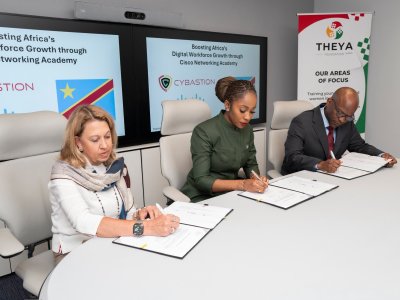
Senegal Launches Its First Satellite: A Step Towards Technological Independence 🛰️
Cliquez ici pour lire en français
On August 16, 2024, Senegal made history by launching its first satellite, GAINDESAT-1A, marking the beginning of a new technological era for the country. This nanosatellite, the result of a project initiated in 2019, symbolizes Senegal’s ambitions in the space domain and its commitment to technological innovation.
The crucial role of GAINDESAT-1A: optimizing resource management 🛰️
GAINDESAT-1A is a small satellite, measuring just 10 cm and weighing around one kilogram. Despite its small size, it is set to play a vital role in managing Senegal’s natural resources. Its primary mission is to collect and transmit environmental data, with a particular focus on water resource management.
The satellite will be at the heart of a network of ground sensors, monitoring water levels in the country’s wells and lakes. This capability is especially crucial in regions where communication infrastructure is limited. The data collected will enable better management of water resources, a major challenge for Senegal.
Beyond water management, GAINDESAT-1A will collaborate with various government agencies. The National Civil Aviation and Meteorology Agency relies on it to improve weather forecasts and enhance air safety. Its geostationary position will also allow it to provide real-time images of the country, paving the way for multiple applications.
The development of GAINDESAT-1A: an ambitious project 💪🏾
The development of GAINDESAT-1A is the result of sustained national effort and international collaboration. It was designed and manufactured by Senegalese engineers and technicians from the SENSAT Senegal project. The satellite also benefited from the collaboration of the University Space Center of Montpellier (CSUM) in France. This partnership, which spanned five years, was overseen by the Senegalese Ministry of Higher Education, Research, and Innovation.
The satellite’s launch was made possible through international cooperation. SpaceX handled the launch via its Falcon 9 rocket from Vandenberg Base in California. GAINDESAT-1A was part of a larger mission, Transporter-11, which deployed 116 satellites from various countries. The German company Exolaunch played a key role in integrating the Senegalese nanosatellite, facilitating its access to space.
A step towards technological autonomy 🚀
This project marks a significant milestone towards Senegal’s technological autonomy. It aims not only to meet immediate needs in resource management but also to develop the skills of African engineers and students in the space field. The long-term goal is to enable the design and manufacture of satellites directly on the African continent, thereby reducing dependence on foreign technologies.
Senegalese President Bassirou Diomaye Faye emphasized the importance of this achievement. He stated on social media.
Senegal enters a new era today with the successful launch of our first satellite, GAINDESAT-1A.
This launch symbolizes not only a technical success but also a decisive step towards the country’s technological independence. It also reflects its ambition to become a key player in the African space industry.
Follow our news every day on WhatsApp directly in the « Updates » tab by subscribing to our channel by clicking here➡️TechGriot WhatsApp Channel Link 😉









